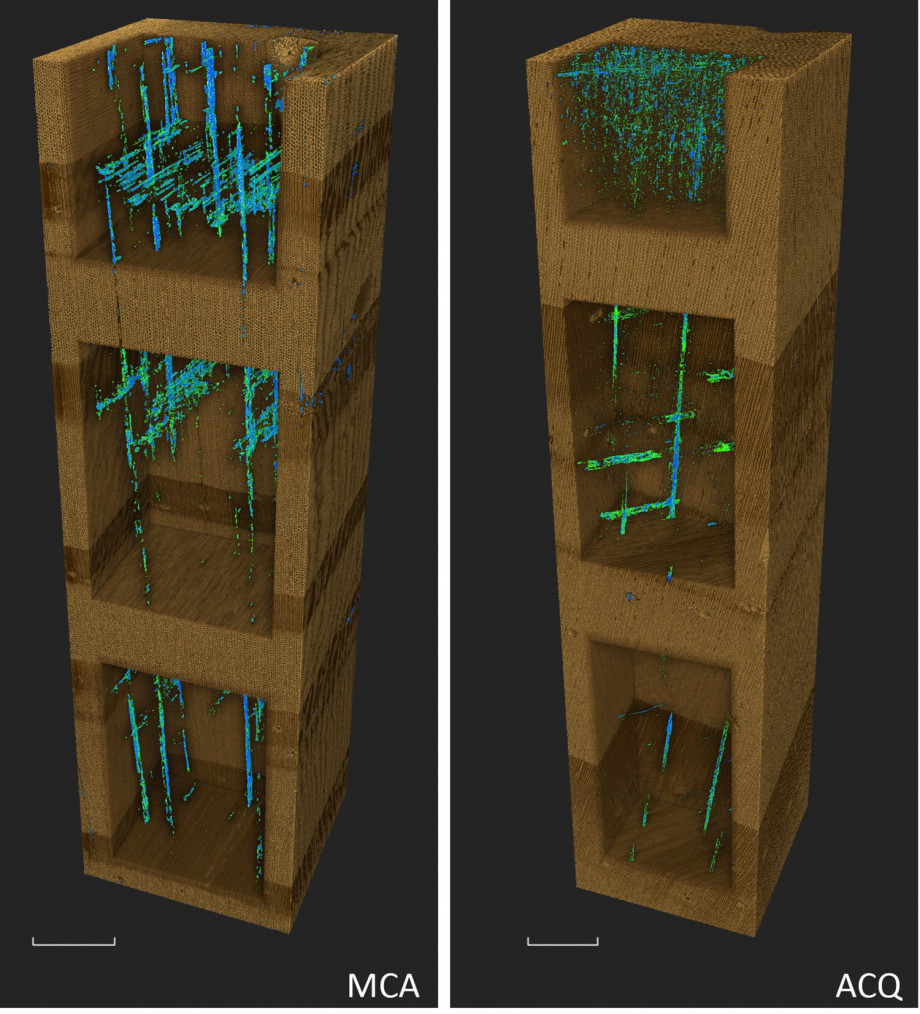NCI’s Drishti VR technology, a custom-designed tool for visualising volumetric datasets in virtual reality, is now being used to teach students about the structures of different kinds of wood. Three dimensional models created at ANU using an X-ray Micro-CT machine are visualised using Drishti and made interactive and brought to life in virtual reality. Much like the CT scans that are conducted in hospitals, the micro-CT machines take many images of a particular object’s internal structure from multiple angles. Drishti makes it easy to then combine and process the images into a virtual reconstruction of the physical object.

The researchers used a VR device to help students taking a course in wood protection explore the distribution of silica in Fraser Island turpentine (an Australian marine borer-resistant timber) and copper in treated pine. The technology allows the students to see in detail exactly where the inorganic materials (silica or copper) occur in the wood and how the structures of different kinds of wood lend themselves to different arrangements of internal silica or copper. By scanning with X-rays and scaling up the models to a more manageable size, the microscopic details of the wood are revealed in exquisite detail. The wood samples used were between 2 and 19 millimetres in diametre, visualised using around 23,000 images at a resolution of 1.1 micrometres.
Developer of Drishti and NCI Scientific Programmer Dr Ajay Limaye says, “It is very exciting to have students interacting with and learning from the technology I developed. The aim was always to find new ways of showing volumetric data so that we could learn from these objects. We have now visualised rocks, bones, wood, insects, oceans and even a mummy!”
Students report an improved learning experience through using the Drishti VR technology, with a clearer connection between their class work and the physical world. Students said that “The system enables me to have deeper impression of wood structure” and “I personally find it much better to understand and see [the wood].” Drishti and Drishti VR have both been used in educational settings in the past, in disciplines including anatomy, geology and oceanography. Available for free online, anyone can download the software and play around with the fossils, bones and insects available in the system. To find out more about Drishti, click here: https://github.com/nci/drishti.
To read the paper discussing this research, click here: A virtual reality system to augment teaching of wood structure and protection.